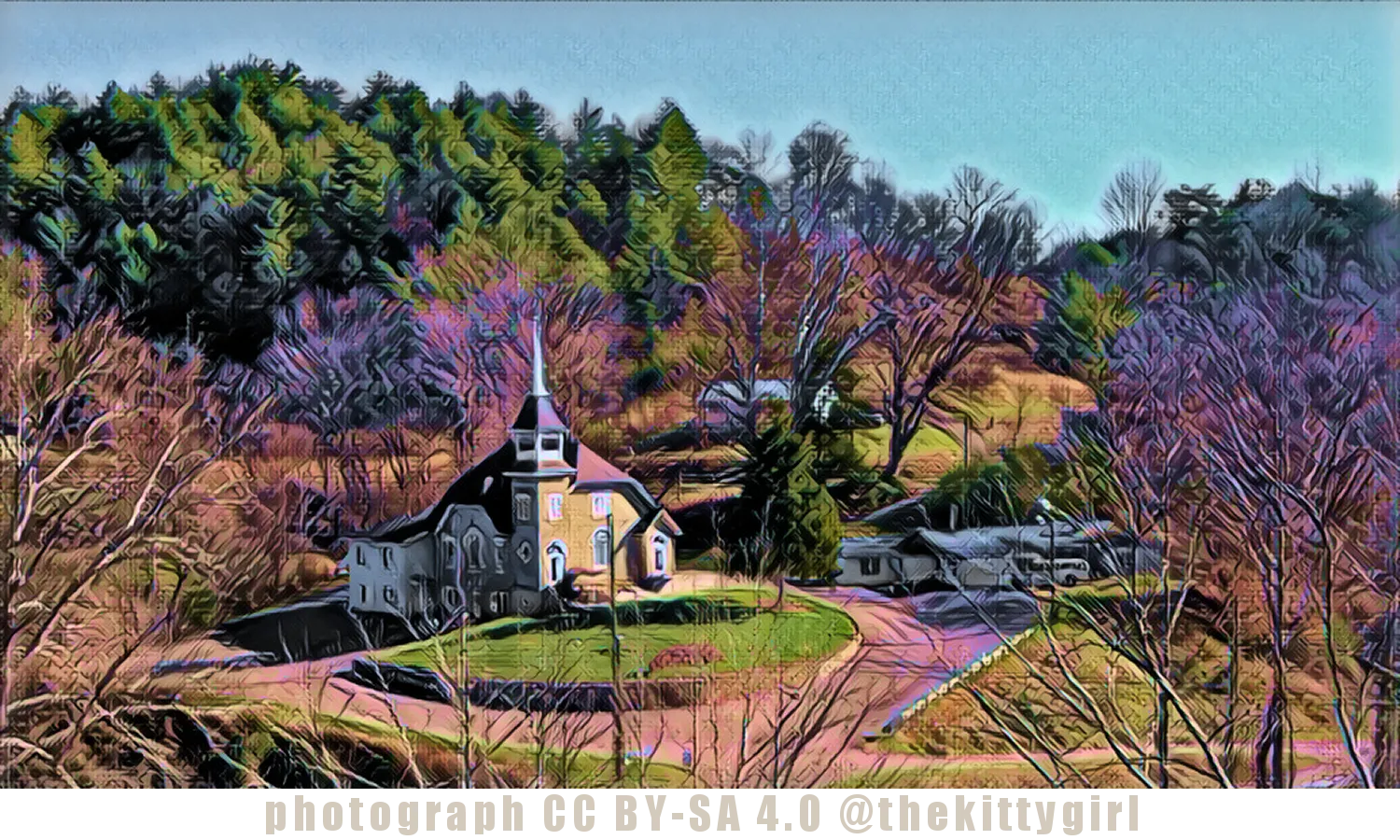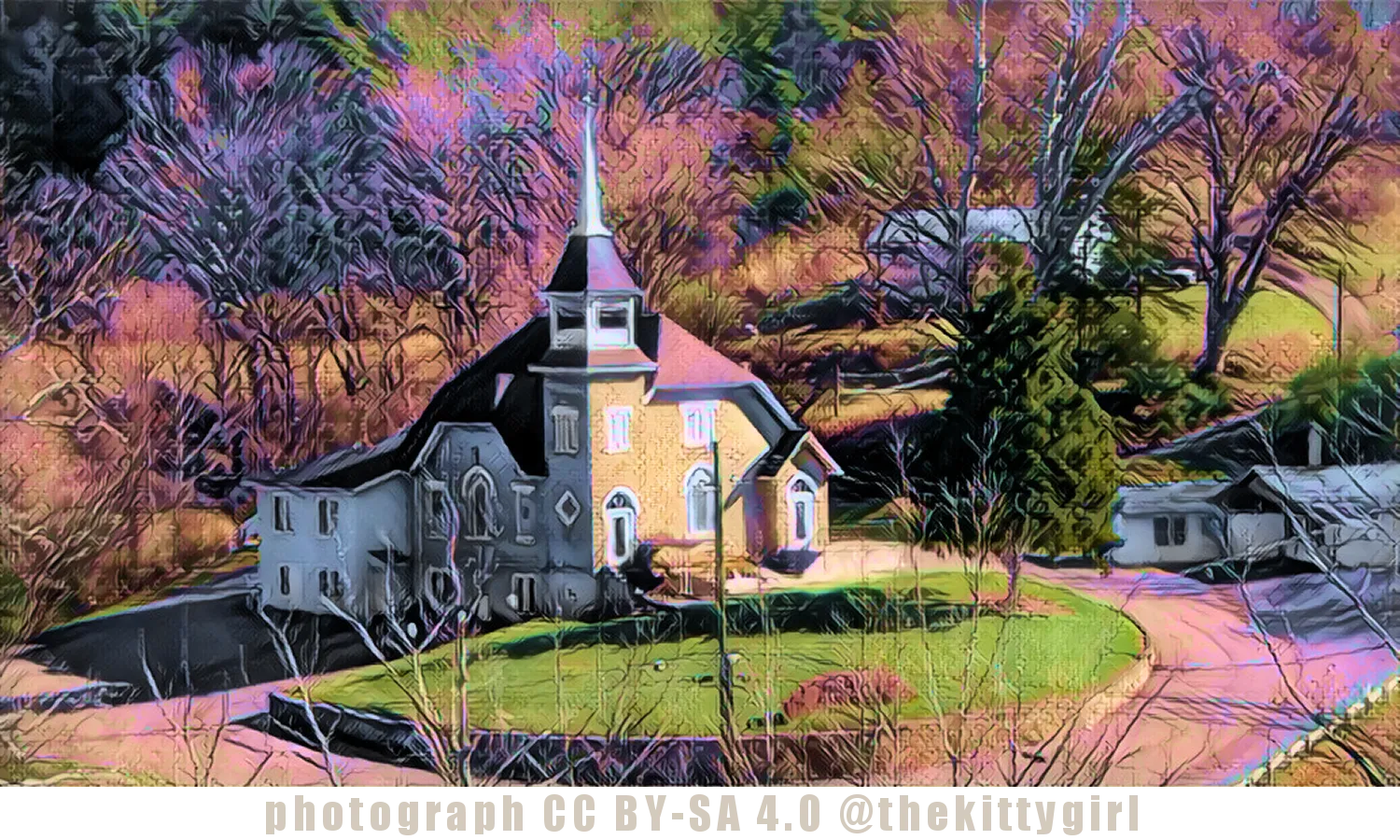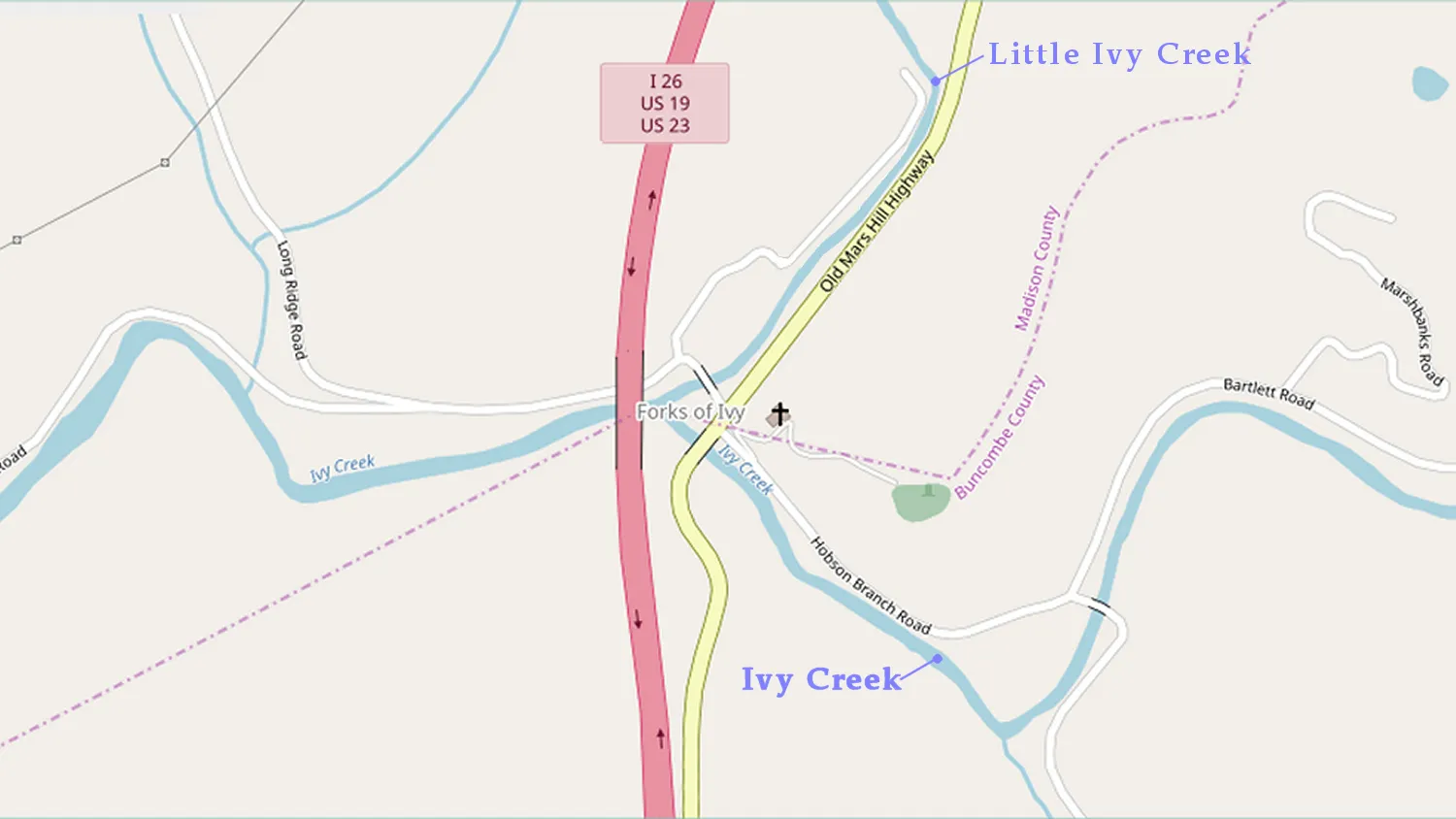
I think what makes this church stand out is that its exterior is not the simple clapboard design of many smaller rural churches, nor the red brick design common of larger churches. The facade is a tan stucco and the roof is a complementary ruddy-brown. The bell tower is not centered along the front wall of the building, but located, instead, on a corner. The roof lines are very unique, too. There is one window that is a square, rotated at 90⁰ to make a diamond-shape, while other windows have a fanlight (semi-circular transom-style window) above the rectangular window. Another side of the building (on the left in the photo) shows a semi-circular arched lentil over an arched window, accentuating the window beautifully. This is such a pretty place!

I had always been curious about the origin of the name of the community and the church in which it is located, Forks of Ivy, but never met anyone who knew the etymology of the name. Today, with the miracle of the Internet, however, we are able to learn things nowadays much more easily than before. The origin of the name is given in a comment on Jim's Journeys blog:
“The Forks of Ivy Baptist Church was established in 1843. The community and the church were named for the confluence of Big Ivy Creek and Little Ivy Creek.”
The following screenshot from OpenStreetMap.org shows the two creeks coming together, and the church located in the fork:

screenshot from OpenStreetMap.org

!steemitworldmap 35.791840 lat -82.539592 long Forks of Ivy, NC D3SCR


 to learn more about either of these projects, please visit: @heyhaveyamet or @steemterminal
to learn more about either of these projects, please visit: @heyhaveyamet or @steemterminal09-Jan-2020
Return from Forks of Ivy to 𝕜𝕚𝕥𝕥𝕪's Web3 Blog

